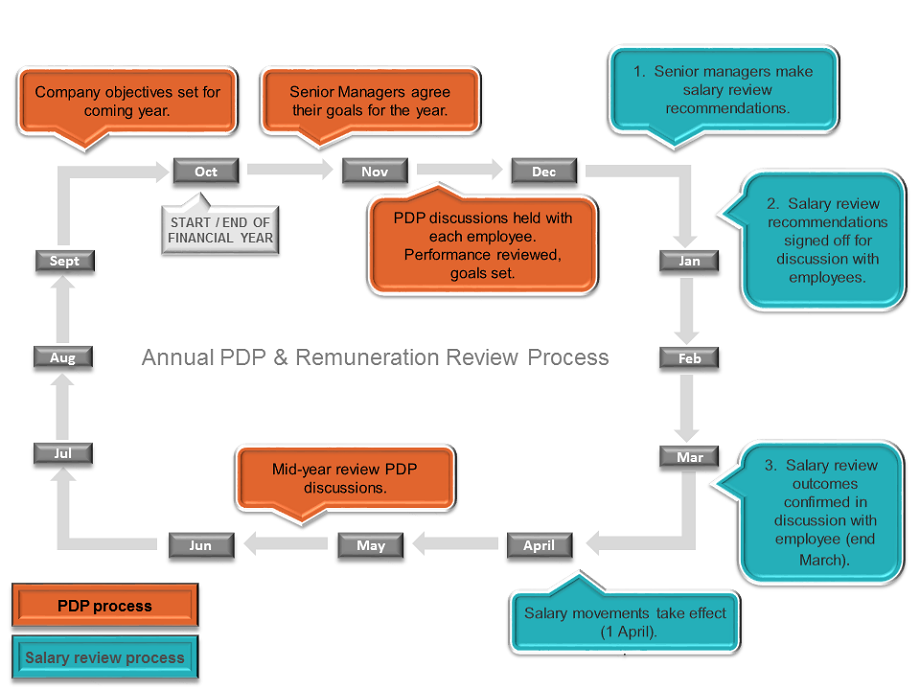Our Performance Development Process
Why do we have a Performance Development Process (PDP)?
When it comes to achieving your annual business plans/budgets a small number of key activities substantially improve your chances of success. They involve engaging your people in the plan, having clear aligned objectives and regular ‘on track’ conversations. It’s also important to the motivation and retention of our people that we talk regularly with them about their growth and prospects in our business. Described below are the key PDP activities we recommend with links to the tools to help you. It is all summarised in our Performance Development Process (PDP) handbook.
What are your PDP responsibilities?
Your responsibilities include...- Sharing the Plan: an interactive workshop with your team, held once the coming years plan/budget is set, in which you discuss your business plan and objectives for the year and discuss what this means for team and individual objectives and priorities.
- Setting Objectives: after the ‘sharing the plan workshop’ have a one-on-one conversation with each team member to set priorities and objectives for the coming year driven by your business units plan. Use our setting objectives performance development process template and tips for setting SMART goals to prepare for this conversation and record what is agreed.
- Regular ‘On Track ‘Review Conversations: if you’ve set the right objectives and priorities with your team then the more frequently you discuss progress on these the more likely they are to be achieved. You should discuss progress against your plan with the entire team at least quarterly, celebrate the progress you’ve made or agree actions to get back on track. If you have used the setting objectives performance development process there is space to record these meetings.
- Developing Your People: it’s in your interests to grow the capability of your team. Where you support their development not only will their contribution grow but so, typically, will job satisfaction and commitment. As part of the Performance Development Plan you should capture a small number of development priorities and actions (e.g. on-the-job training ) you and they will take throughout the year.
- Talking about the Future: we want our good people to stay and progress in the business so you should regularly discuss what other jobs or growth opportunities within the business that your team members might be interested in. Often there are things both you and they can do so they develop in a way that benefits everyone. Again this conversation is part of the initial setting objectives performance development process
- Yearly review. At the end of the year you and the employee review how they’ve performed against their objectives. Use the end of year review – performance development process template to guide these.
What do you need to do?
Our annual PDP cycle and your role in it is explained below. You can also see how PDP informs our annual remuneration cycle.
